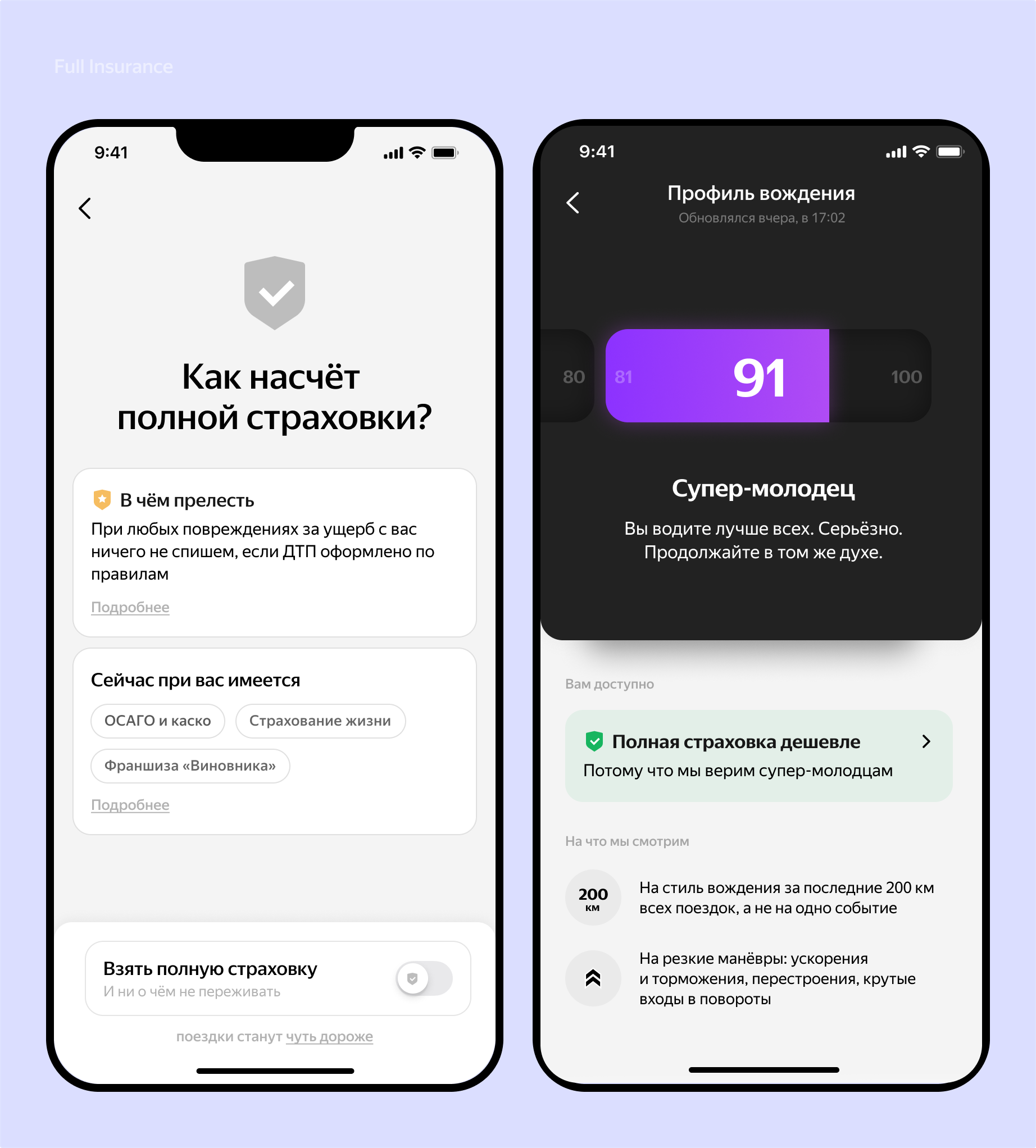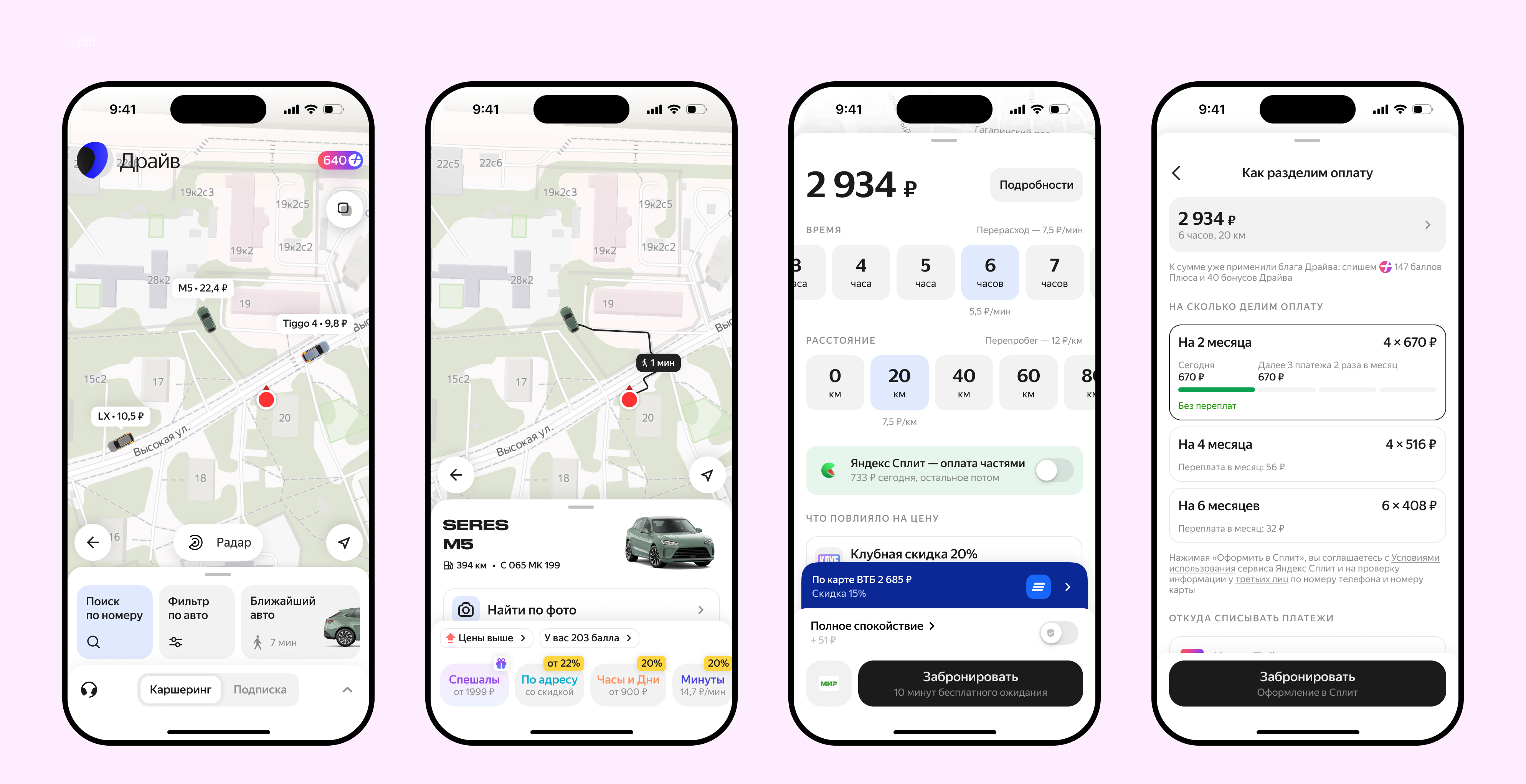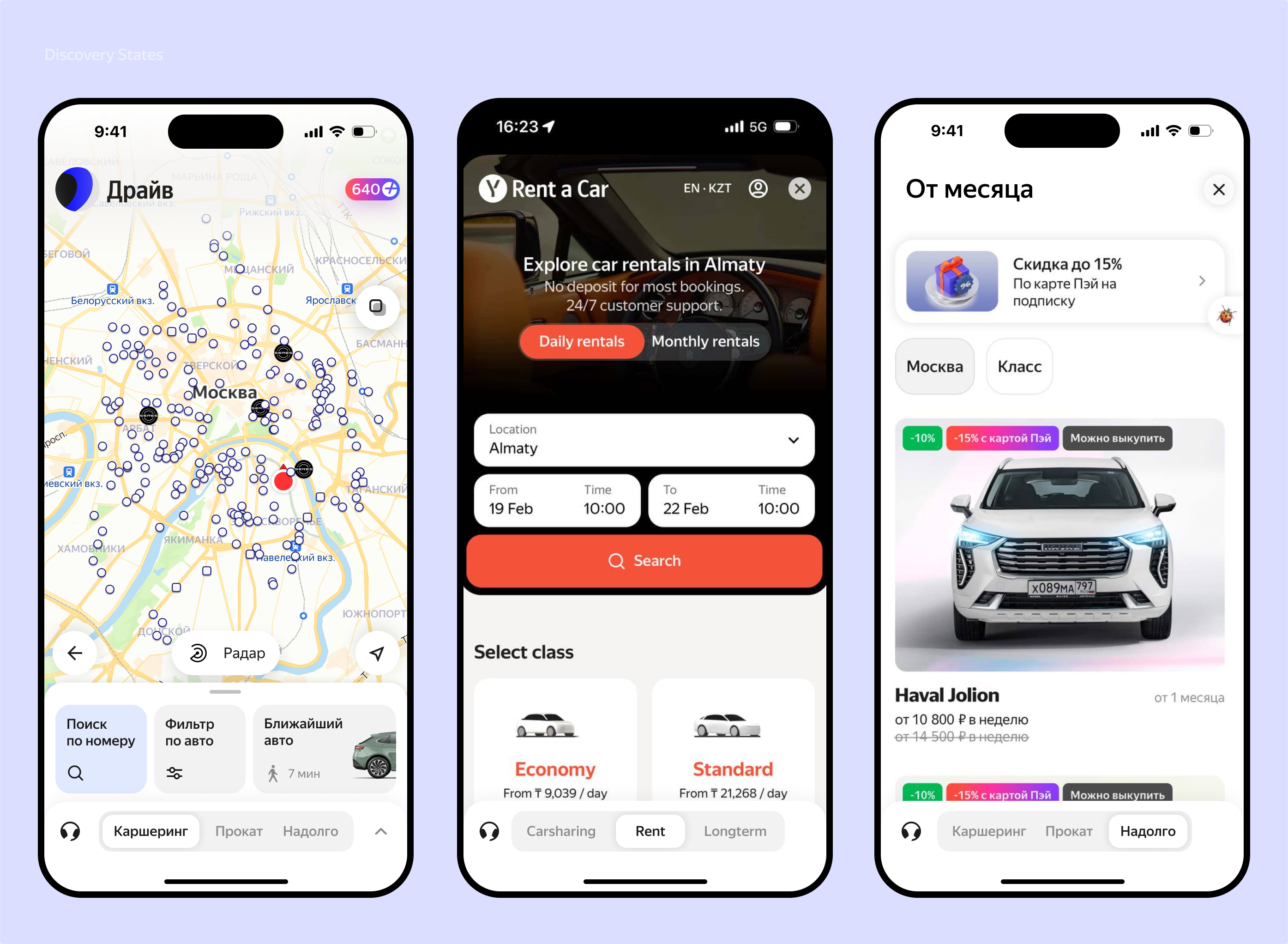The Challenge
In early 2025 the Russian consumer market started to stagnate (reference 1, reference 2). For car-sharing, a very thin-margin game, that drop hurt fast. My task was: squeeze new efficiency from every part of Yandex Drive, mostly through product, so we could grow profit and share while demand slid.
Approach
Risk-Based Insurance
First, insurance. We built a real-time risk engine that scores each driver and adjusts the fee by car class. The switch turned insurance to more customers, automatically made it expensive for bad drivers while reduced price for excellent drivers. So we incetivised needed behavior and extended feature to more segments. More revenue minus less incedent rate boosted profit roughly 231%.

Risk-based pricing interface that boosted profit by 231%
Innovative Revenue Streams
Next, fresh money lines. I sold naming rights for a new tariff to Winline – common for stadiums, unheard-of in mobility. At the same time we ran "city health" sprints. Each week we checked marketshare, tuned fleet mix (moved cars between cities with special tariffs), fired targetted CRM campanes for each city, RFM, researched demand geos and opened more zones. In six key cities share climbed on average 10 percentage points: Moscow, St Petersburg, Ekaterinburg, Kazan, Sochi, Saratov – all grew significantly.

Split BNPL - revolutionary payment solution for mobility
Product Innovation
For planners I launched "Special Day," a one-tap bundle that hides math with most popular 1 day config and lifted daily revenue. To grow revenue I shipped Split — the first native buy-now-pay-later flow in Russian transport.
Activation and Acquisition
We worked more closely with Yandex Go, Russia’s biggest everyday app, to reach a larger audience. By adding extra Drive entrypoints and more ways to start a Drive trip inside Yandex Go, we doubled the number of MAU via Yandex Go.
Cost Optimization
We also cut waste. Cashback on fixed fares dropped from 10% to 3%, reducing these costs by two thirds was not effecting retention. Better parking rules and prompts halved towing penalties. I increased subscription price while its cap (maximum amount of benefit) came down to 3 000 rubles. We see that our loyalty Club (name of subscription) share shrinks, but projected revenue will be higher.
AI-Powered Operations
Product operations were improved as well. Inside the team I launched AI agent – it drafts product specs and pulls market facts from our data. Writing a full PRD decreased from six hours to under thirty minutes, freeing discovery time. This one became a starting point for my Partn.ai journey.
Results
- Insurance gross profit more than doubled year on year.
- While working on efficiency we gradually improved UX step-by-step. Retention for March–April cohorts hit all time high, up nine points from 2024.
- Parking and cashback fixes cut those costs by over half.

Superapp integration across all Yandex mobility services
Key Learnings
- Even old products hide profit levers—mix new revenue with strict cost cuts.
- Risk-based pricing can flip insurance from a low income to major revenue streem.
- Selling Naming rights work even in digital, not only stadiums.
- Simple bundles may beat complex price screens.
- Native BNPL outperforms external credit links.
- In-house AI that writes specs pays for itself in weeks.